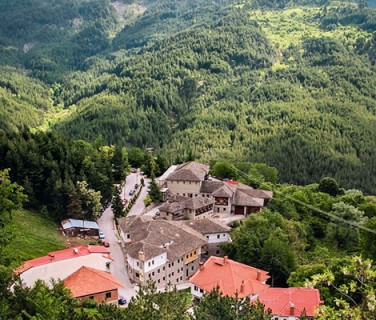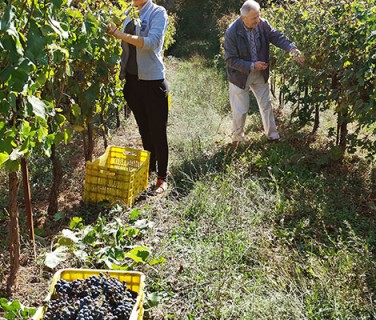
Wine & wineries, Zitsa
5.0
Taste
If the new global wine trends continue to favor indigenous varieties, freshness and elegance, then this remote and mountainous part of Greece, dominated by the Pindos mountain range and the cool climate that it brings, will definitely be a place to keep an eye on in the coming years.
Epirus has always been an insider’s secret; it is an underdog of a region where cool-climate viticulture has reached its apogee. Among its signature wines are stylish, elegant, low-alcohol reds and refreshing whites – still or sparkling, and sourced from steep high-elevation vineyards, often located 1000m or more above sea level.
The two most important wine areas in Epirus are Zitsa and Metsovo. Located northwest of the town of Ioannina, Zitsa has been graced with PDO status and produces the lemony Debina, a variety that yields subtle fresh sparkling wines which, together with those of Amyntaio, are the country’s most reliable bubblies. The still wines produced from the same variety are equally light-bodied, with bright acidity and delicate aromas of green apple, pear, lemon and white flowers. They are ideal as aperitifs or to complement salads and starters.
Metsovo, to the east of Ioannina, also has a well-established reputation for winemaking, thanks to the pioneering work of the Katogi Averoff winery and its founder, the statesman Evangelos Averoff-Tositsas. He was the first to introduce foreign grape varieties to Greece back in 1958, starting a vineyard with Cabernet Sauvignon in a rugged, inhospitable spot in the wild highlands that came to be called Yiniets, after the local dialect word for “vineyard.” This winery’s textbook-stylish medium-bodied Cabernet Sauvignon (with great ageability) is among the top examples of tits kind produced in Greece.
In the broader region, Cabernet Sauvignon is joined by two other red varieties, Bekari and Vlachiko, as well as aromatic white grapes (such as Traminer, Malagousia, Riesling and Sauvignon Blanc) that combine tension, lovely crispiness and minerality. One well-known native to the region, the brown bear, has developed a taste for all these varieties, devouring the lovely grapes as soon as they ripen and endangering annual production.












